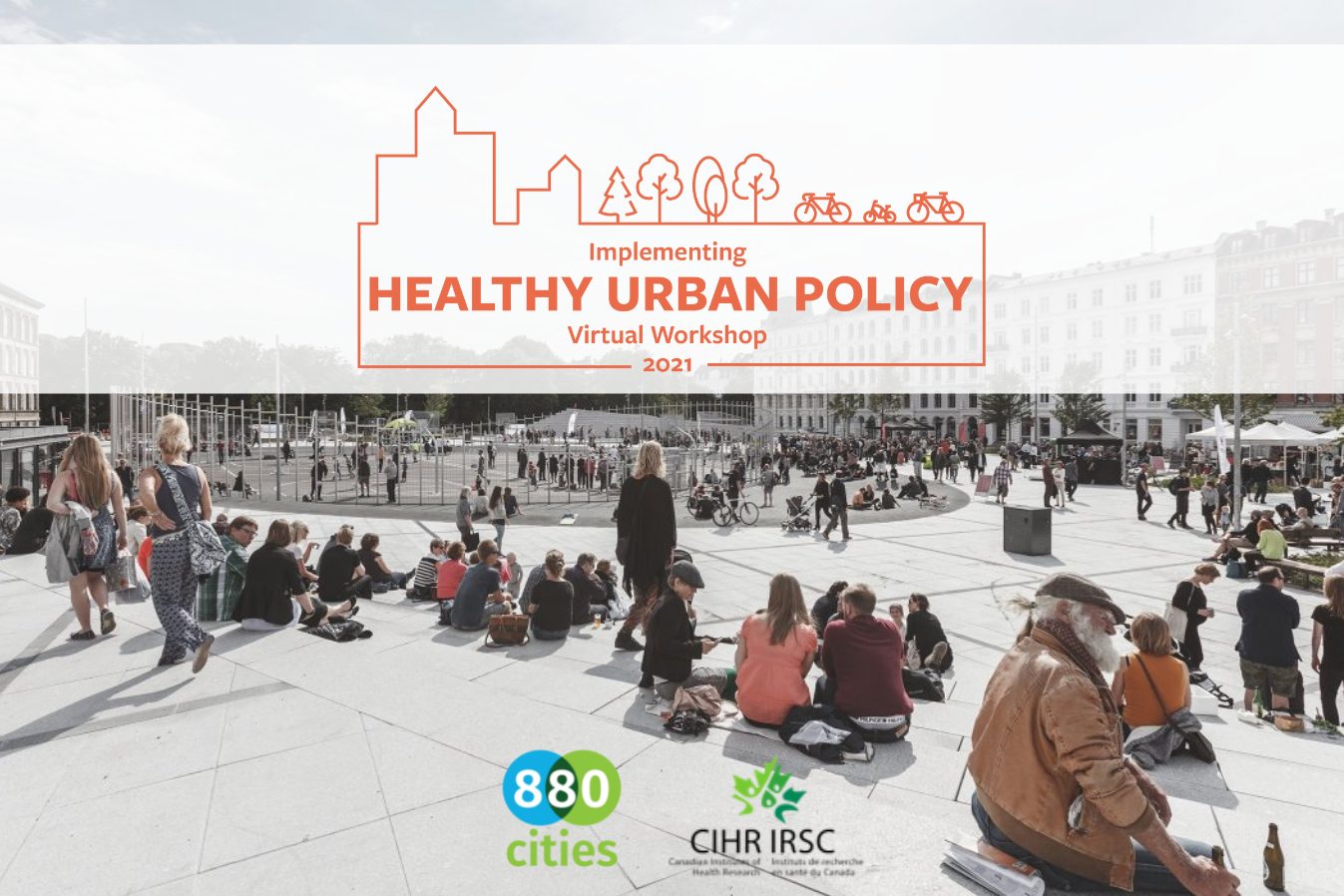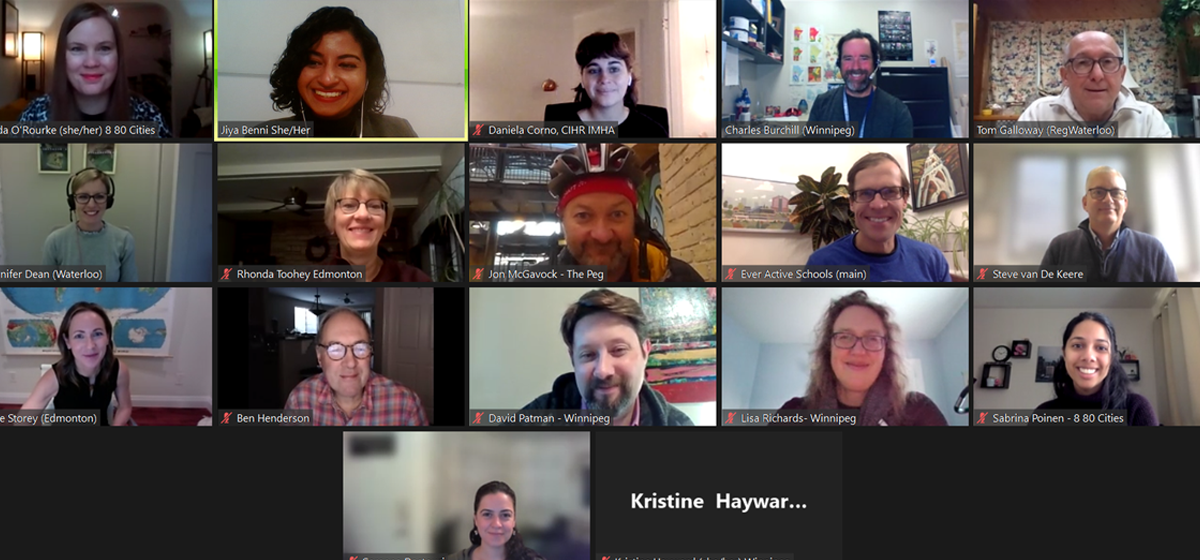
26 Nov Co-creating Inclusive Healthy Cities with City Leaders from Edmonton, Waterloo and Winnipeg
From October 14 to November 4 of this year, 8 80 Cities hosted city leaders from Edmonton, Waterloo and Winnipeg for a four-day virtual workshop series on creating healthy cities called ‘Implementing Healthy Urban Policy Virtual Workshop’. Over the course of the workshop, the multidisciplinary teams, comprising of Healthy Cities researchers, elected officials, and public health, transportation and planning staff heard from experts from Denmark, Netherlands, India, and the United States and gained an understanding of the high-level policies and on-the-ground implementation practices that go into creating healthy cities with a focus on public spaces and mobility. Here are a few takeaways:
1. Democratize the design of cities using a people-first approach
One of the things we heard from our Copenhagen speakers was democratizing the city. Copenhagen uses a people-first approach while designing its urban spaces – be it their publicly accessible waterfront or their streets that prioritize its sunny areas for people walking. Copenhagen is now a city that people want to hang out in because they prioritized people’s experience at the time of design. When you co-create streets and public spaces with the people using them, you get spaces that work for them, address their concerns and over which they have a sense of ownership. Co-creating is the process of creating or designing with the people who will be using these facilities. Folkets Park in Copenhagen is a brilliant example of co-creation. Here, they centred loved and care and worked hand-in-hand with the community while redesigning the park. For any sort of co-creation, it is important to invest time in creating strong and deep partnerships with the community.
2. Long term vision, short term action
Another great lesson from Copenhagen was this motto – long-term vision, short-term action. Copenhagen’s transformation from a car-dependent city to a cycling one did not happen overnight. There was not even a tipping point. The rate of people cycling steadily increased while the rate of people driving steadily decreased. The important thing here was persistence – you need a long-term vision and short-term actions to help you achieve it. And for those parts of the world where people took to cycling during the pandemic, it’s going to take new strategies to make them stick to cycling beyond the pandemic. It is also very important to document and measure the progress. If you care about public life, measure it. If you care about people cycling, measure it. This will help you back the interventions already made and build the case for more interventions.
3. Create inviting spaces for active transportation and public life
From a design point of view, it is important to create spaces that invite people to use that space – be it to linger or to be physically active. The onus is not on the user to use the space, it’s on the powers that be to create spaces that invite the users. In Copenhagen, they created public spaces that invited people to come and sit down. We went on a digital bike tour in the Netherlands to see how the cycling infrastructure in that country is designed to reduce the psychological load of the people cycling. The infrastructure is designed for error, for different skill levels and to make drivers more cautious.
4. Centring racial equity in transportation initiatives
Through law enforcement, planning and polity, Black people and other minorities have been denied the right to move or simply exist in public space. Charles T. Brown calls this arrested mobility. When thinking about transportation and mobility efforts, this needs to be at the centre of the discussion. We need to be proactive about it, not reactive. Mobility initiatives should lead with equity, be conscious of various ways in which various forms of inequity intersect and should not erase people of colour.
5. Creating healthy cities that are age-inclusive
Most often, our cities seem as if they are designed for an athletic 30-year old man but cities should also be accessible to the 8-year olds and the 80-year olds among us. This is not an idea that is strange to 8 80 Cities but it needs to be repeated. A city with an engaging and accessible public realm that invites seniors to take part in public life can address social isolation among seniors to a great extent. A city that has spaces for young people from all backgrounds to congregate can do a lot to instill a sense of belonging in them. We should also go one step further and think about creating multigenerational spaces where the old can interact with the young.

The workshop was initially planned to be held in Copenhagen in Spring 2020 but with the pandemic, we had to change plans and relaunch it in a virtual format. While nothing can replace an in-person trip to Copenhagen, the city leaders were able to take part in some engaging presentations and discussions.
We would like to thank Canadian Institutes for Health Research for making this program possible and all the three City teams for sticking with us despite the many changes the program went through because of the pandemic.



